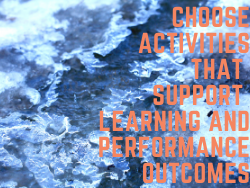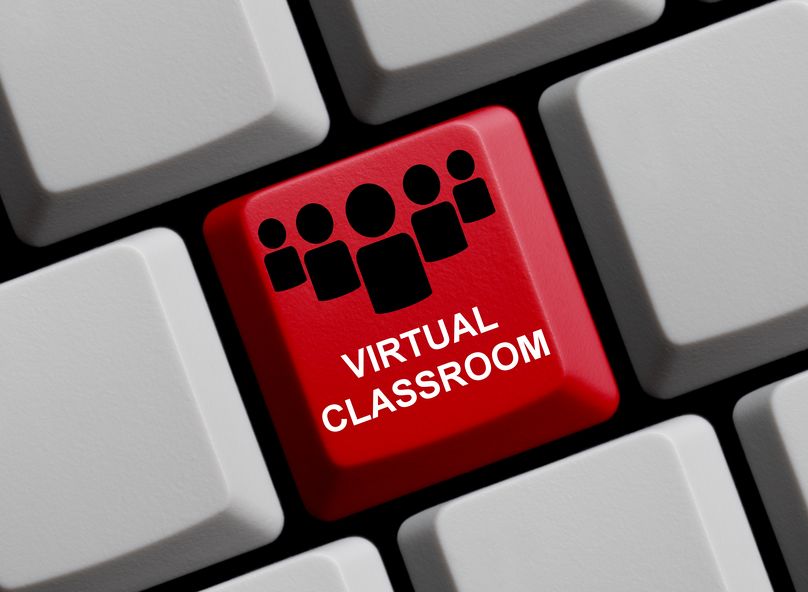Facilitation Tips Series, Part 3: Why are You Using Icebreakers?
While researching evidence-based practices for the virtual classroom, I was looking for specific examples of activities that supported proven...
5 min read
 Jennifer Lindsay-Finan
:
Jun 6, 2023 5:47:00 AM
Jennifer Lindsay-Finan
:
Jun 6, 2023 5:47:00 AM

5 Recommendations to Incorporate Emotional Intelligence to engage your audience in the Virtual Classroom, and What Virtual Learning Experts® Need to Know
This is part of an ongoing column by Virtual Learning Expert® Jennifer Finan. She’s exploring trends that impact virtual classroom trainers and designers to improve learner engagement in the hybrid virtual classroom.
One of the biggest factors that separates average virtual training from excellent virtual training is emotional intelligence. At InSync, we firmly believe that virtual learning is about the people, not the technology. So how can we demonstrate emotional intelligence in the virtual classroom experience?
“Emotional intelligence is the ability to use, understand and manage one’s own emotions in a positive way, and to manage stress, communicate effectively, de-escalate issues, problem solve and empathize with other people,” says Joanne Frederick in this article in Forbes. Communicating, problem-solving, and empathizing are all key components of the virtual classroom. This makes emotional intelligence incredibly important when training virtual teams.
In fact, emotional intelligence has always been important because training is always about the people. The goal of any form of learning, whether in-person or in virtual classroom learning, is to be able to engage and connect with learners. This lays the foundation and opportunity to build enough trust to support changed behavior and the application of new knowledge and skills.
It’s even more important in the virtual classroom to demonstrate emotional intelligence and build deeper relationships. Connection through emotional intelligence in training has become more of a priority with the recent increases in the remote and hybrid workforce. According to Harvard Business Review, 65% of workers say they feel less connected to their coworkers than they did in more traditional settings. The same article goes on to say, “In today’s lonely world, human connection is everyone’s job.” As Virtual Learning Experts, we can help to foster that human connection for better learning facilitation through our training programs.
Emotional engagement is one of the three dimensions of our InQuire Engagement Framework. If learners are emotionally connected to the content and other class participants, they’re going to be engaged and active contributors in the class.
Emotional engagement does not stand alone. It creates a positive ripple effect for the virtual training team. If learners feel highly emotionally engaged, they are going to be more open to the ideas shared in the program. This openness promotes intellectual engagement. When learners are intellectually and emotionally engaged, they’re more motivated to contribute. They will want to learn how to use the tools to make their voice heard. Now they’re environmentally engaged too.
Unfortunately, the inverse is also true. When learners are not feeling emotional engagement, any technical issues can be even more frustrating, leading to less environmental engagement. When learners aren’t feeling connected to the content, they’re not going to be as intellectually engaged either.
A Positive Welcome. Consider what kind of message learners receive when they first enter the virtual learning platform. If there’s complete silence, they’re likely to worry whether their audio is connected properly. If the screen is blank, they may be worried there’s something wrong and they’ll miss out. If people are already there talking and someone welcomes them and brings them into the conversation, that’s going to be a significantly more welcoming and positive experience.
Introductions. Whenever we enter a group physically or virtually, we want to know who else is there. Encourage learners to look at the participants list, and refrain from hiding it from them. Incorporate some kind of introductory activity to help learners get to know each other and the facilitation team early on. That doesn’t mean spending ages hearing from one person at a time, but it does mean doing something to encourage those introductions to take place.
Really Listen. Whether you’re facilitating or producing, really listen to your learners’ responses when you ask a question. Don’t be tempted to multi-task or check your notes. It’s imperative to actively listen to what they’re saying. That’ll help you respond empathetically and appropriately to those learning in a virtual classroom. When a learner feels motivated to contribute to the discussion, they’re not going to be motivated to contribute again if they are met with a disinterested or distracted response. When learners feel heard, respected, and useful, they will continue to contribute. Listening is the key to responding with the right response or follow-up question.
Make Connections. One of the most powerful things a facilitator can do is help the learners make connections with other learners, the facilitation team, and the content. When you spot a common theme in their responses or a common trait among learners, highlight it. It’ll help build a sense of community amongst the learners which will in turn encourage more contributions and participation in the class. An advanced facilitation skill and virtual training strategy involves turning to other learners instead of answering a question yourself. Open it up and invite others to suggest solutions when a learner has a question that you don’t need to answer yourself.
Being self-aware and emotionally intelligent are excellent qualities for anyone to have in or out of the workplace. In the virtual classroom specifically, it’s highly important for engaging students online.
Virtual Classroom Designers need to know how to put themselves in the learners’ shoes and keep content relevant for them. They need to understand what learners will need and what they’ll want from the program. It isn't helpful to focus solely on what the business wants to be included. Designers need to incorporate creative ways of engaging online learners that encourage real connections between learners, the facilitation team, and the content. One way they can do this is by designing effective debriefs. Build in time for good, in-depth discussions and ensure there are great open-ended questions included in leaders guides to support facilitators in having these conversations.
Virtual Classroom Facilitators need to know how to communicate in the virtual classroom. This goes way above using the right words and ensuring a clear audio connection! Virtual facilitators need to be able to communicate verbally. They must use the power of their voice to engage learners even during lengthy lectures. Facilitators need to be able to communicate non-verbally. One way to achieve this is by displaying a positive camera presence when using a webcam. More importantly, virtual facilitators need to be able to "read the room" virtually. For example, they need to spot disengaged learners and bring them back in. Even if no one is on a webcam, virtual facilitators should be able to read the body language in the bandwidth and make adjustments at the moment to re-engage learners as required.
Virtual Classroom Producers need to know exactly how it feels to be a learner struggling to participate in the virtual classroom. They need to know how to empathize and support learners to troubleshoot technical issues when they arise quickly so that the learner doesn’t miss out on any content. They need to be able to encourage learners to try out the tools, fostering comfort and digital fluency. Virtual producers need to know how it feels when a learner gets left behind because of the technology or unclear instructions. Knowing this feeling lets producers act as learner advocates to ensure all learners feel fully connected.
Virtual Learning Leaders need to know what to look for when observing the instructional team. A certified Virtual Learning Coach also analyzes the impact emotional intelligence has on learner engagement. Virtual Learning Coaches need to be able to ask the often-challenging questions to help coaches ‘see’ their behavior clearer.
Master the art of incorporating emotional intelligence into virtual classrooms by using the 3 C’s to communicate effectively. Learn how the five key elements of emotional intelligence affect learners and learning outcomes.
Are you wondering how to incorporate Emotional Intelligence for engaging learners online in the Virtual Classroom? Consider our workshop Emotionally Intelligent Virtual Learning.

While researching evidence-based practices for the virtual classroom, I was looking for specific examples of activities that supported proven...

The virtual classroom offers a flexible, dynamic learning environment for modern learning blends. We often think about questions such as: When can...

As organizations increasingly rely on virtual classrooms to upskill and reskill their teams, the role of the virtual facilitator has become a...